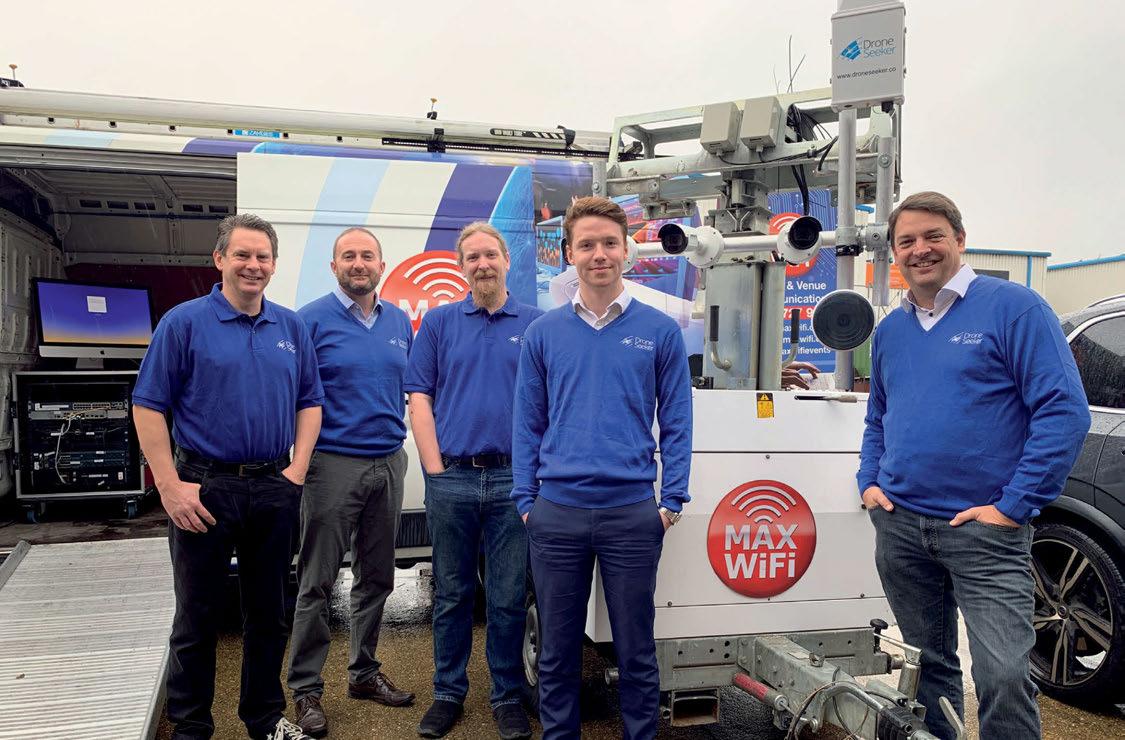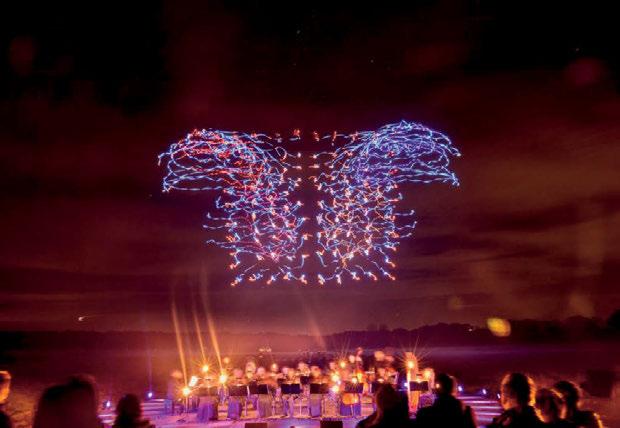
4 minute read
IN THE FIELD: DRONE SEEKER

IN THE FIELD: DRONE SEEKER
With more drones in our skies than ever before, the prospect of drone disruption to live events is very real. How will we protect against this new threat from above? TPi speaks to Max WiFi’s Rob Watson to find out…
Commercial drones are becoming more sophisticated, with models regularly released to the market created for various uses – most notably filming, but also for crowd control and entertainment displays. Drones add new dimensions of entertainment to live shows, as demonstrated on Drake’s Assassination Vacation 2019 tour, where 200 illuminated drones performed routines during two of his songs. Police and event security teams have also started using UAV technology for crowd surveillance in and around venues and events. However, UAVs can also be a disruptive technology. For example, back in May this year, drones were used to scatter leaflets displaying swastikas and hate-speech outside an Ariana Grande concert in Sacramento, US. Meanwhile, at this year’s Notting Hill Carnival – an event attracting more than a million visitors – there were multiple sightings of unauthorised drones flying above London’s streets. This posed a risk not only to the crowd, but also to the police helicopters flying overhead.
In fact, the potential risks drones pose to events are many and far-reaching, including the likes of paparazzi intrusion, contraband smuggling, VIP harassment, illegal streaming, protest and even terrorism. Having analysed the threats that drones pose, Max WiFi explored the technology to combat this problem and created Drone Seeker. Max WiFi’s Rob Watson explained the system: “Our RF sensors are placed around the perimeter of a venue and the detection software can locate pilots and their drones’ locations up to 1.5km away by triangulating unique radio signals emitted by the drone/controller,” he commented. The software displays the make/model, altitude, distance and speed of a drone providing event security teams with the information they need to react accordingly. “It also documents a history of the detected drones, logging any potential red flags,” Watson continued. Even if no malice is intended, drones can lose control easily – a quadcopter will crash if just one of its blades break, which throws up the potential for a dangerous collision with an audience member or even an artist. It wouldn’t be the first time either; in 2015, Enrique Iglesias underwent reconstructive surgery on his hand after sustaining a fracture and severe lacerations as a result of attempting to catch a drone as part of a mid-show stunt. This incident proved the potentially catastrophic impact of contact with drone blades. Va rious governments around the world have put in place legislation in an attempt to tackle the misuse of drones. In October, the UK Government published updated drone legislation, which came with a range of stipulations for drone operation. As well as the need to register any drone between 250g and 20kg with the Civil Aviation Authority, drone pilots must also pass a competency test in order to obtain a Flyer ID. An yone responsible for a drone must also pay a £9 annual fee for an Operator ID. The legislation also stipulates that drones cannot be flown: over 120m above a surface; within 50m from people, buildings, cars, trains or boats; within 150m of a large crowd (1,000 people) or a built-up area; or within 5km of an airport restriction zone. Bu t, how far will these new laws go in preventing the misuse of drones? “The new Flyer ID theory test will no doubt provide some education to a few hobbyists about the implications of misusing drones, but this test has not made it any harder to buy a drone off the shelf,” commented Watson. “Simply put, it will not stop anybody whose intent is to use drones to disturb, disrupt or cause harm.” To date, there have not been any major drone-related incidents at a live event, but in order to maintain this record, security teams must be proactive and prepare for the threat. “The journey to an event venue is secured by CCTV, stewards, police, bag checks, various detectors and search dogs, but what measures are in place to prevent threats that come from above?” Wa tson explained that in practice, if a drone is filming a performance illegally, the technology could identify the pilot’s location, allowing security to be dispatched in order to interact with the pilot. He c ontinued to explain how the technology can be used to deter more sinister uses. “If a drone attack is being planned, an average of six to eight reconnaissance flights will occur, allowing us to monitor drone activity in the days and weeks leading up to an event and resolve the threat before the event begins. If a liquid-payload-carrying drone is detected travelling towards a high-density area or VIP target, security teams will have advanced notice to evacuate those areas and direct police to the location of the pilot.” As t echnology continues to develop, security countermeasures need to be up to date with modern security threats to keep events safe. “It’s remarkable to see how drones create emphatic displays or provide unique camera angles,” Watson concluded. “Let’s make sure we prevent those wishing to use them in irresponsible ways.”
TPi
Photos: Max WiFi
www.droneseeker.co












